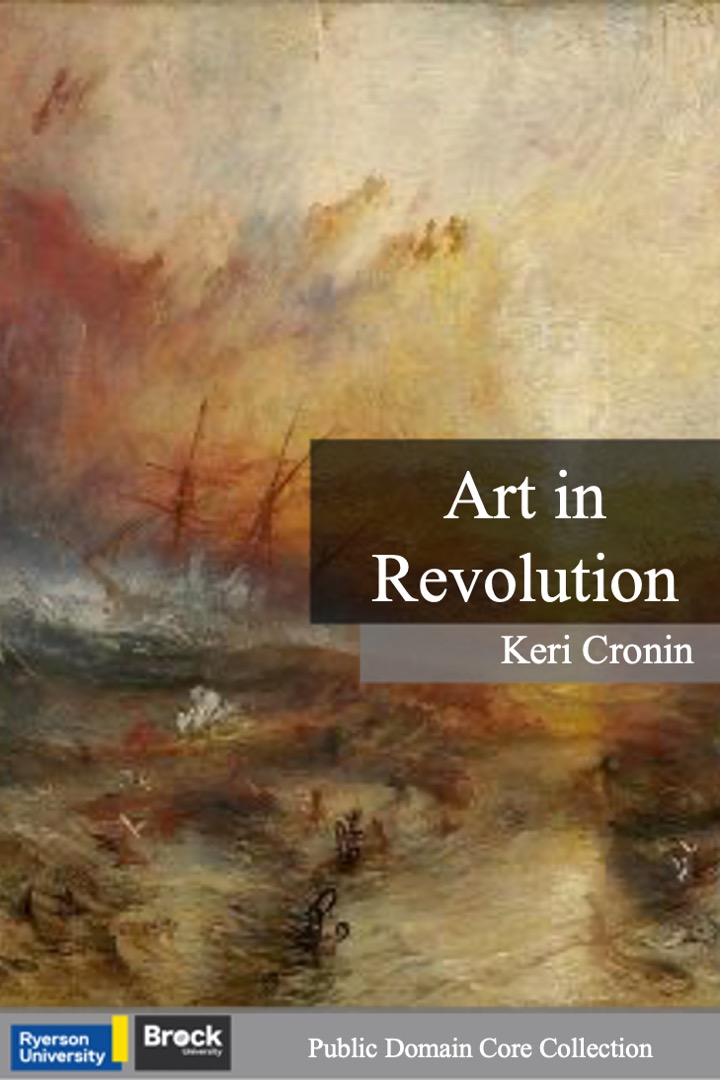Case Studies from the Public Domain
The open access book: Art in Revolution: Nineteenth-Century Visual Culture consists of 27 chapters curated from student analyses of case studies.

Students in VISA 2P95 worked through a number of case studies intended to dig deeper into issues surrounding art and visual culture from the 19th century. Students were required to submit a response for three of these case studies. These responses were due two weeks after the topic was explored in class.
VISA 2P95 investigates the role and function of art and visual culture within the paradigm shifts of the modern world, its relation to politics, social, cultural and technological change. The course focuses on principal movements with origins in the French Revolution and the Industrial Revolution; Neoclassicism, Romanticism, Realism, Impressionism and Postimpressionism.
Students kept a weekly reflection journal and the responses expanded upon at least one of the points made in their reflection journals. Students were also asked to consider questions and discussions that arose during class. In addition, it was expected that students conduct research to help move beyond the initial reflection.
Prompts include:
- How can books, articles, online exhibits, etc. help you learn more about the topic?
- What sources will help you develop the “What Now?” section of your reflection?
- How will you assess them to make sure they are appropriate sources for academic research?
Students had a choice to submit a written response or an artistic response. Written responses were approximately 500 words. Artistic responses needed to be accompanied by a 250-word artist statement explaining why they chose to make what they did and how the piece relates back to the thematic topic. Students who scored over 80% on their responses were invited to have their work included in Art in Revolution: Nineteenth-Century Visual Culture.

